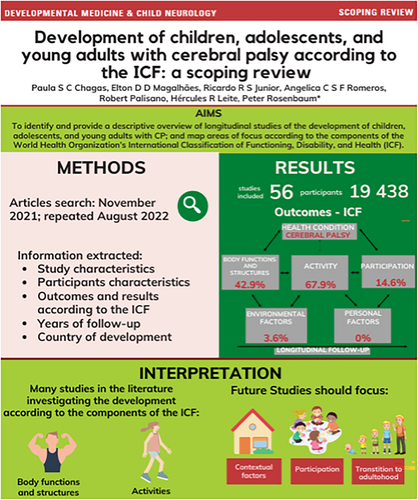Development of children, adolescents, and young adults with cerebral palsy according to ICF: A scoping review
This scoping review provides an overview of longitudinal studies on the development of children, adolescents, and young adults with cerebral palsy (CP). It aimed to describe the developmental outcomes according to the components of the World Health Organization's International Classification of Functioning, Disability, and Health (ICF).
Longitudinal studies look at the same people over time. Studies exploring the development of children, adolescents, and/or young adults with CP were included in this scoping review. Several databases (MEDLINE, PubMed, LILACS, EMBASE, Cochrane, CINAHL, Scopus) were searched for papers published between 2002 and 2022. All outcome measures related to development were classified into ICF components.
The 56 studies included 19 438 participants, mainly children, followed by adolescents, and lastly young adults. All components of the ICF were investigated; many studies reported outcomes in more than one component. Activity was the most investigated (67.9%; n = 38 studies), followed by body functions and structures (42.9%; n = 24 studies). Participation (14.2%; n = 8 studies) and environmental factors (3.6%; n = 2 studies) were the least studied. None of the studies investigated personal factors as an outcome.





